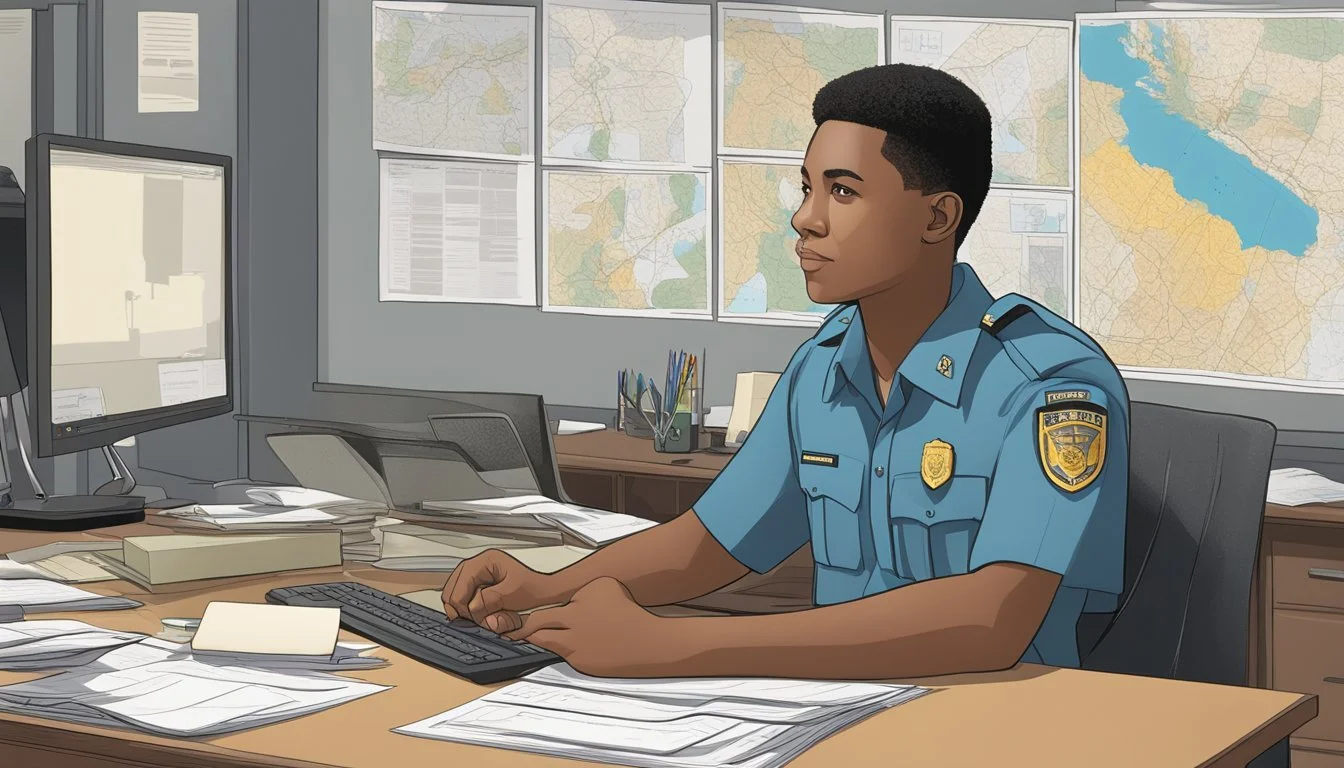Juvenile Liaison Officer Documentary: Unmasking the Truth Behind Youth Justice!
Nick Broomfield's "Juvenile Liaison" documentary series offers a gripping look into the interactions between law enforcement and young offenders in 1970s Lancashire, England. The films explore the controversial practices of juvenile liaison officers as they handle cases involving pre-teen children accused of minor crimes like theft and truancy.
The documentaries shed light on questionable police methods and elicit empathy for the youth caught in the system. Broomfield's unflinching camera captures raw, emotional interviews with children, parents, and officers, providing viewers with an intimate glimpse into a complex societal issue.
Released in 1976, "Juvenile Liaison" stirred public debate about the treatment of young offenders and the role of police in early intervention programs. The film's impact led to a follow-up documentary, further examining the long-term consequences of these interactions on the children's lives.
Concept of Juvenile Liaison
Juvenile liaison programs aim to prevent youth offending through early intervention and support. They involve collaboration between police, social services, and other agencies to address the needs of at-risk young people.
History and Development
Juvenile liaison schemes emerged in the UK during the 1960s as an alternative to formal prosecution for young offenders. Lancashire Police pioneered one of the earliest programs in 1962, seeking to divert children from the criminal justice system.
The approach gained traction as research showed the potential negative impacts of criminalizing youth. By the 1970s, juvenile liaison officers were working in many police forces across Britain.
These initiatives reflected a shift towards more welfare-oriented responses to youth offending. They aimed to address underlying issues contributing to delinquent behavior rather than simply punishing wrongdoing.
Roles and Responsibilities
Juvenile liaison officers work closely with young people, families, schools, and social services. Their key duties include:
Identifying at-risk youth and intervening early
Providing guidance and support to young offenders
Mediating conflicts and resolving disputes
Liaising between police, schools, and social services
Referring youth to appropriate support services
Conducting home visits and family assessments
Monitoring behavior and compliance with agreements
Officers aim to build trusting relationships with young people. They offer mentoring and practical assistance to help youth make positive choices and avoid further offending.
Impact on Youth Offending
Research indicates juvenile liaison schemes can reduce reoffending rates among young people. Early intervention helps address underlying issues before problematic behaviors escalate.
Key benefits include:
Diverting youth from formal criminal justice processes
Providing support and guidance to troubled young people
Improving relationships between police and communities
Reducing school exclusions and antisocial behavior
However, some critics argue the approach can be overly intrusive. Concerns have been raised about the extent of police involvement in children's lives outside of criminal matters.
Evaluations suggest the effectiveness of juvenile liaison depends on the quality of relationships formed and the availability of support services. When implemented well, these programs offer a valuable tool for preventing youth crime.
Juvenile Liaison in Blackburn
The Juvenile Liaison program in Blackburn, Lancashire aimed to address youth offending through early intervention and support. Police officers worked closely with young people and their families to prevent crime and promote positive behavior.
Community Engagement
Juvenile Liaison officers in Blackburn fostered strong relationships with local schools, youth clubs, and community organizations. They conducted regular visits to educational institutions, delivering presentations on law and consequences.
Officers organized sports activities and workshops to build trust with young people. These events provided opportunities for positive interactions outside of law enforcement contexts.
The program emphasized early identification of at-risk youth. Officers worked with teachers and social workers to spot potential issues before they escalated into criminal behavior.
Case Studies
The documentary "Juvenile Liaison" (1976) by Nick Broomfield and Joan Churchill showcased several cases handled by Blackburn's juvenile liaison section. It highlighted the day-to-day work of officers dealing with underage petty offenders.
One case involved a young boy caught shoplifting. The liaison officer met with the child and his parents, focusing on understanding the root causes rather than punishment.
Another case featured a truant teenager. The officer coordinated with the school and family to address underlying issues and develop a plan for regular attendance.
These examples demonstrated the program's emphasis on rehabilitation and support over punitive measures for young offenders in Blackburn.
Nick Broomfield's Approach
Nick Broomfield employed a distinctive documentary style in his "Juvenile Liaison" films. He aimed to shed light on the treatment of young offenders in Lancashire, England through intimate interviews and observational footage.
Filmmaking Style
Broomfield utilized a direct cinema approach for "Juvenile Liaison." He and co-director Joan Churchill immersed themselves in the daily operations of the Blackburn police's juvenile liaison section. Their cameras captured unscripted interactions between officers and young people.
The filmmakers prioritized authenticity, allowing events to unfold naturally on screen. They avoided staged scenes or narration, instead relying on candid moments to reveal truths about the juvenile justice system.
Broomfield's style emphasized building trust with subjects. This enabled him to capture honest, often emotional exchanges between troubled youth and authority figures.
Documentary Objectives
"Juvenile Liaison" sought to expose questionable practices in the handling of underage offenders. Broomfield aimed to elicit empathy for the children while critically examining the police's methods.
The films delved into complex social issues surrounding youth crime. They explored factors like poverty, family dysfunction, and institutional failings that contributed to juvenile delinquency.
By revisiting subjects years later in "Juvenile Liaison 2," Broomfield demonstrated the long-term impacts of early police interventions. This follow-up reinforced his commitment to exploring systemic problems in juvenile justice.
Production Notes
Nick Broomfield and Joan Churchill employed innovative documentary techniques to capture the realities of juvenile liaison work in Blackburn, Lancashire. Their approach faced some obstacles, but creative solutions allowed them to produce a revealing look at this police program.
Filming Techniques
The filmmakers used handheld cameras and natural lighting to achieve an intimate, observational style. They followed juvenile liaison officers on their rounds, capturing unscripted interactions with young offenders and their families. Long takes allowed scenes to unfold naturally, providing an unfiltered view of the process.
Interviews with officers, children, and parents were conducted in homes and police stations, creating a sense of authenticity. The directors opted for minimal narration, letting the subjects tell their own stories through their words and actions.
Challenges and Solutions
Gaining access to sensitive situations involving minors posed ethical and legal hurdles. The production team worked closely with police and social services to obtain necessary permissions while protecting identities where required. Some scenes were filmed from a distance or with faces obscured to maintain privacy.
Technical limitations of 1970s equipment meant dealing with grainy footage in low-light conditions. The directors embraced this aesthetic, using it to convey the gritty realism of their subject matter. Sound recording in noisy environments proved difficult, but strategic microphone placement helped capture crucial dialogue.
Reception and Impact
The juvenile liaison officer documentary sparked discussions about youth justice and police practices. It garnered attention from critics, law enforcement, and the public.
Public Perception
The documentary shed light on a previously obscure aspect of policing, surprising many viewers. Some praised its unflinching look at how authorities handled young offenders. Others criticized the film as overly negative toward police.
The film's ban for 15 years only increased public interest. When finally released, it reignited debates about youth crime and appropriate interventions. Many found the portrayed treatment of children disturbing.
Social workers and child advocates cited the documentary when pushing for reforms. It influenced public opinion on how to address juvenile delinquency more humanely.
Effect on Policing Practices
The documentary's revelations led to scrutiny of juvenile liaison programs. Some police departments reviewed and updated their procedures for interacting with young offenders.
There was increased emphasis on de-escalation techniques and alternatives to harsh discipline. More officers received specialized training on child psychology and trauma-informed approaches.
Some jurisdictions expanded social services and diversionary programs as alternatives to police intervention. The film highlighted the need for multi-agency cooperation in addressing youth crime.
Police leadership had to balance public safety concerns with more nurturing approaches to troubled youth. The documentary served as a catalyst for evolving policing philosophies regarding juveniles.
Comparative Analysis
Nick Broomfield's "Juvenile Liaison" documentary stands out in its genre. It provides a stark look at juvenile justice systems and their impact on young offenders.
Similar Documentary Works
Frederick Wiseman's "Titicut Follies" (1967) shares parallels with "Juvenile Liaison" in its critical examination of institutional systems. Both films employ observational techniques to expose flaws in their respective subjects. "Titicut Follies" focuses on a psychiatric hospital, while "Juvenile Liaison" scrutinizes juvenile policing.
The Maysles brothers' "Salesman" (1969) uses a similar vérité style to Broomfield's work. It follows door-to-door Bible salesmen, capturing raw human interactions much like "Juvenile Liaison" does with police and young offenders.
Evolution of the Genre
"Juvenile Liaison" marked a shift in documentary filmmaking towards more confrontational styles. Broomfield's approach influenced later works like Michael Moore's "Roger & Me" (1989), which also challenged authority figures directly.
The film's banned status for 15 years highlights the growing impact of documentaries on public discourse. This controversy paved the way for more provocative works in subsequent decades.
Modern documentaries often build on Broomfield's techniques, combining observational footage with interviews and archival material. Films like "The Act of Killing" (2012) push boundaries further, blurring lines between documentation and reenactment.
Conclusion
The Juvenile Liaison Officer documentary provides a revealing look into an experimental police program aimed at steering youth away from crime. Filmed in the 1970s, it captures a controversial approach to juvenile justice in Blackburn, England.
The film sparked significant debate upon release. Its unflinching portrayal of police interactions with children led to a 15-year ban in the UK. This censorship only heightened public interest in the documentary's content and message.
Nick Broomfield and Joan Churchill's work remains an important historical record. It offers insight into past methods of addressing youth offending and highlights ongoing questions about effective juvenile intervention.
The documentary continues to prompt discussions on balancing compassion with accountability when dealing with young offenders. Its legacy endures in criminal justice and social work circles.
Ultimately, "Juvenile Liaison" stands as a thought-provoking exploration of a complex societal issue. It challenges viewers to consider the long-term impacts of different approaches to youth crime prevention.





